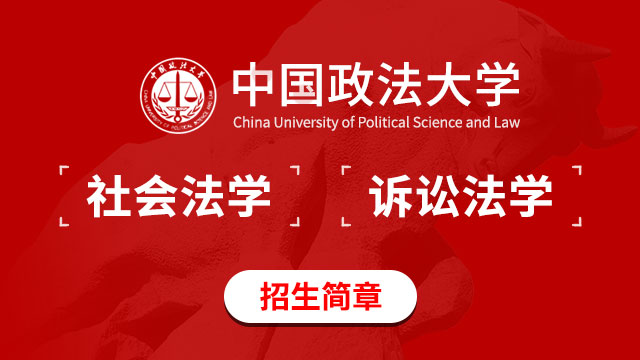Passage Two
Science is finally beginning to embrace animals who were, for a long time, considered second-class citizens.
As Annie Potts of Canterbury University has noted, chickens distinguish among one hundred chicken faces and recognize familiar individuals even after months of separations. When given problems to solve, they reason: hens trained to pick colored buttons sometimes choose to give up an immediate (lesser)food reward for a slightly later (and better) one. Healthy hens may aid friends, and mourn when those friends die.
Pigs respond meaningfully to human symbols. When a research team led by Candace Croney at Penn State University carried wooden blocks marked with X and O symbols around pigs, only the O carriers offered food to the animals. The pigs soon ignored the X carriers in favor of the O’s. Then the team switched from real-life objects to a T-shirts printed with X or O symbols. Still, the pigs ventured only toward the O-shirted people: they had transferred their knowledge to a two-dimensional format, a not-inconsiderable feat of reasoning.
Fairly soon, I came to see that along with our closest living relatives, cetaceans(鲸目动物)too are masters of cultural learning, and elephants express profound joy and mourning with their social companions. Long-term studies in the wild on these mammals helped to fuel a perspective shift in our society: the public no longer so easily accepts monkeys made to undergo painful procedures in laboratories, elephants forced to perform in circuses, and dolphins kept in small tanks at theme parks.
Over time, though, as I began to broaden out even further and explore the inner lives of fish, chicken, pigs, goats, and cows, I started to wonder: Will the new science of “food animals” bring an ethical revolution in terms of who we eat? In other words, will the breadth of our ethic start to catch up with the breadth of our science? Animal activists are already there, of course, committed to not eating these animals. But what about the rest of us? Can paying attention to the thinking and feeling of these animals lead us to make change in who we eat?
11. According to Annie Potts, hens’ choice of a later and better reward indicates their ability of .
A. social interaction B. facial recognition
C. logical reasoning D. mutual learning
12. The expression “not-inconsiderable feat” (Para.3)shows what pig can do is
.
A. extraordinary B. weird C. unique D. understandable
13. What is Paragraph4 mainly about?
A. The similarities between mammals and humans.
B. The necessity of long-term studies no mammals.
C. A change of public attitude to the treatment of mammals.
D. A new discovery of how mammals think and feel.
14. What is the author’s view on eating “food animals”?
A. He regrets eating them before. B. He considers eating them justifiable.
C. He is not concerned about the issue. D. He calls for a change in what we eat.
15. What is the best title for the passage?
A. In Praise of Food Animals B. Food Animals in Science Reports
C. The Inner Lives of food animals D. Food Animals: past, present and future
Passage Two
【文章介绍】本文主要阐述了霍金的生平历程,包括他的出生、家庭、所受的教育和身体状况。尽管他的身体日益恶化,他对黑洞和宇宙大爆炸的研究仍获得巨大突破。
12. 【答案】D
【考点】细节题
【解析】本题问的是霍金早期对科学感兴趣的原因是什么。
文章首段说明了霍金父母的职业都与科学相关,使得他对科学感兴趣。因此此题选
D 项“他的父母影响了他”。
【误项排除】A 项“他的兄妹喜欢科学”,B 项“当霍金还是个孩子时,他就开始学习相关的课程了”,C 项“他在数学和物理学方面特别优秀”,这三项不符合题意。
13. 【答案】A
【考点】细节题
【解析】本题问的是关于霍金的妻子—简,可以得知什么。
文章第二段阐述了霍金与其妻子简的故事。他们都来自圣奥尔本斯,相识在新年聚会上。并在霍金的疾病确诊后,快速结了婚。所以 A 项“她和霍金来自同一个地方” 正确。
【误项排除】B 项“她和霍金在同一所学校上学”,C 项“她和霍金在新年那天结的婚”,D 项“在结婚前,她并不知道霍金患病的事”,这三项不符合题意。
14. 【答案】C
【考点】细节题
【解析】本题问的是霍金自我训练的方式是什么。
文章第三段描述了霍金因身体疾病的限制,他找到了自我训练思维的方式:通过大脑把问题视觉化来获得解决方法。因此此题选 C 项“很大程度上依靠大脑想像画面”。
【误项排除】A 项“帮助恢复健康”,B 项“要求列写许多方程”,D 项“被他的同事效仿”,这三项不符合题意。
15. 【答案】A
【考点】态度题
【解析】本题问的是下面关于“大爆炸”理论的陈述错误的是哪个。
文章最后一段论述了“大爆炸”理论形成于 20 世纪 40 年代,但并不是所有的科学家都接受,因此此题选 D 项“不是所有的科学家都认同”。
【误项排除】A 项“霍金是其创建者”,B 项““大爆炸”与黑洞有关”,C 项“霍金的研究论证了该理论”,这三项不符合题意。
16. 【答案】D
【考点】细节题
【解析】本题问的是作为科学界的领军人物,霍金是怎么样的。
全文描述了霍金虽身患重病,但这并没有阻碍他对科学的热爱。即使身体日益恶化, 他仍然努力克服疾病带来的不便,并致力于科学研究,取得了重大成就。因此此题选 D 项“一生大部分都在与疾病抗战”。
【误项排除】A 项“在世存活了 55 年”,B 项“写了许多畅销小说”,C 项“领导了一些专为残疾人士的机构”,这三项不符合题意。
参考译文
斯蒂芬·霍金出生于 1942 年 1 月 8 日,在圣奥尔本斯长大,他在四兄妹中排行老大。他父亲是一位研究生物学家,他母亲在一家医疗研究所担任秘书。可见,霍金对科学感兴趣并不奇怪。在学生时代时,霍金就被物理和数学所吸引。在他看来,物理和数学为他了解世界提供了最基本的见解。但是在牛津大学第一学期,他跟其他同学一样,并没有什么特别之处。
斯蒂芬在牛津大学物理专业以第一名毕业,并开始到剑桥大学读博。当他向未来的妻子求婚时,他的世界多了一人。简也是来自圣奥尔本斯,是一名现代语言学的大学生。简在一次新年聚会时认识了霍金,那个时候,霍金还没被诊断出患病。他们决定尽快结婚,因为他们不知道霍金还能活多久。随着霍金的病情恶化,他需要拄着拐杖走路了。
为了避免身体残疾带来的限制,霍金采用一种新的方式来训练思维。当他的手臂无法使用时,他采用了一种新的方式:不再是手写方程式,而是通过大脑把问题视觉化来获得解决方法。他的一些同事认为这种思维方式造就了他巨大的发现。霍金现在正致力于研究科学上最奇异的问题之一—黑洞,也是对爱因斯坦广义相对论的预测。
霍金对黑洞的研究证实了宇宙初始“大爆炸”的存在。“大爆炸”理论形成于 20 世纪 40 年代,但仍不被科学家们接受。霍金在与数学家罗杰 · 彭罗斯一起研究时, 他意识到黑洞就像反向的大爆炸,这就意味着他用来描述黑洞的数学也能描述大爆炸。这对证明大爆炸确实存在是个关键时刻。随着霍金身体的恶化,他的职业生涯开始腾飞。
免责声明:本站所提供的内容均来源于网友提供或网络搜集,由本站编辑整理,仅供个人研究、交流学习使用,不涉及商业盈利目的。如涉及版权问题,请联系本站管理员予以更改或删除。
 推荐阅读
推荐阅读
-
菲律宾留学学制是什么样?
[国父大学] 2022-03-25
-
西湖大学2022年博士研究生招生简章!
[电子信息与技术] 2021-09-16
-
复旦大学2022年招收攻读硕士学位研究生章程!
[复旦大学] 2021-09-16
-
河南大学2021年秋季学期研究生入校须知!
[河南大学] 2021-09-16
 备考指南
备考指南
-
硕士毕业证书多久能下来?
[外国语言文学类] 2022-06-24
-
广西研究生班学历有用吗?
[广西大学] 2022-06-24
-
金融学北京在职博士招生条件
[中央财经大学] 2022-06-24
-
在职硕士毕业证书在哪儿查询?
[安徽大学] 2022-06-24

 历年试题
历年试题 







